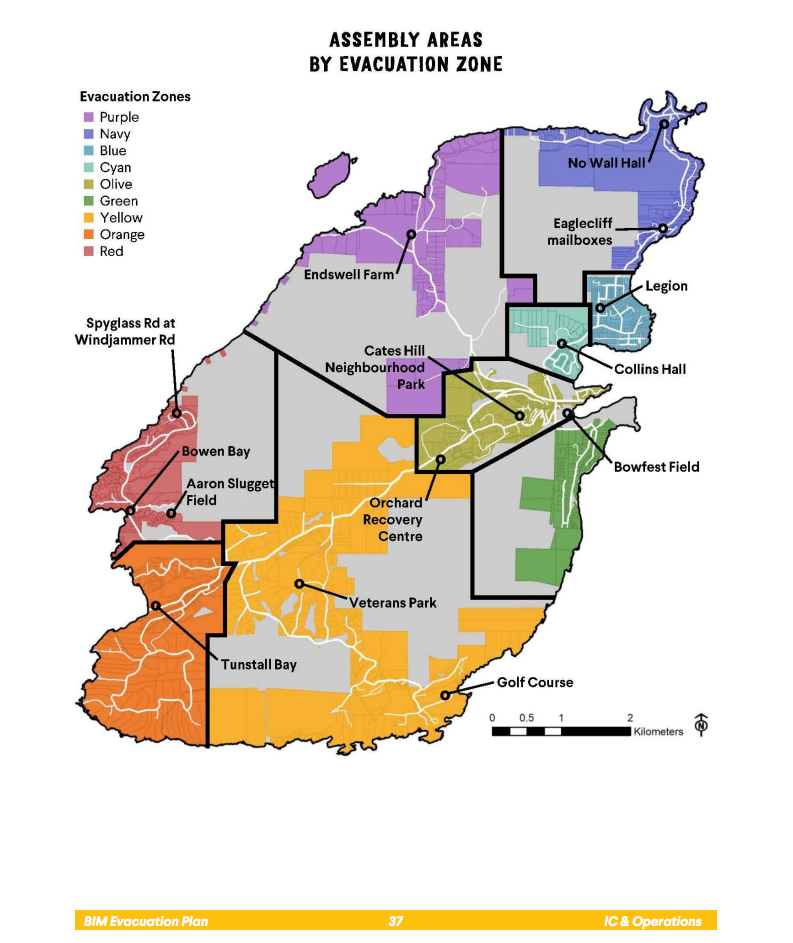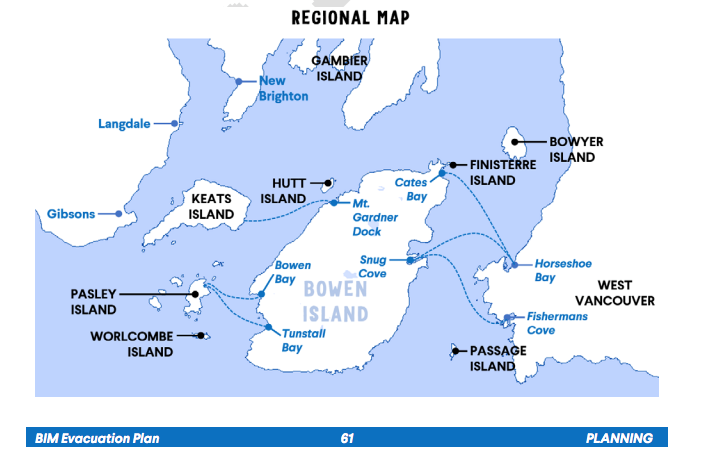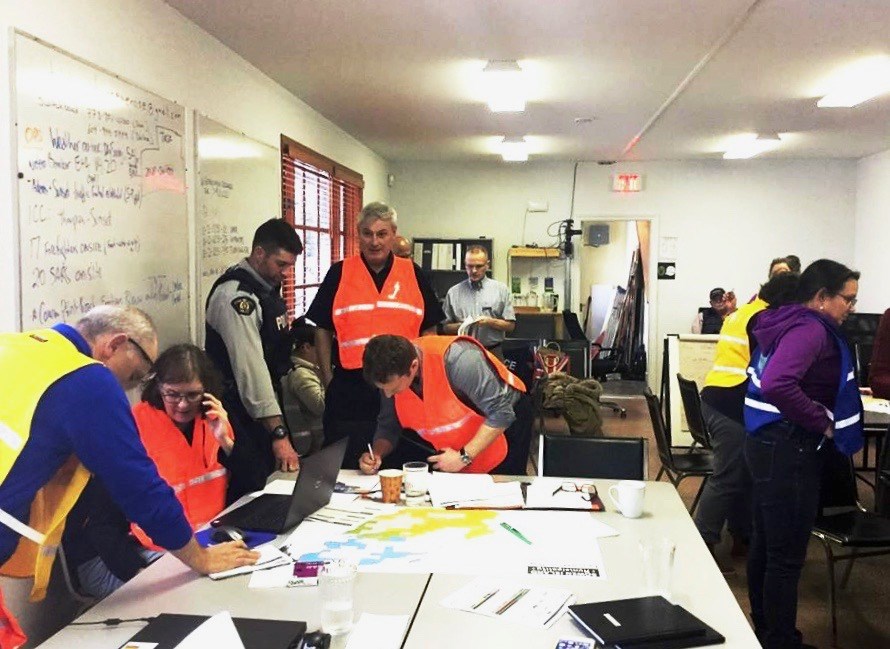What if a fire ignites south of Grafton Lake and cuts off the arterial road to the west side? Or flames sweep over the south slope of Mt. Collins and cut off traffic from the Legion northwards? How would we leave?
These are just some of the scenarios in Bowen Island Municipality’s recently released draft evacuation plan, soon to appear before municipal council for adoption. The plan is an 82-page guide of what to do in case it’s necessary to evacuate part or all of Bowen Island.
“The plan is more meant to guide staff and responders rather than individuals,” said BIM’s emergency program coordinator Jennifer McGowan. “Because the different hazards or the nature of the emergency will change the way that [individuals] need to act.”
A wildland urban interface fire is the most likely threat to result in evacuation of Bowen said the plan.
“It’s hard actually to imagine what else would cause an evacuation of Bowen,” said McGowan. “We don’t have the industry that can sometimes require further evacuation planning.”
But where a fire strikes affects the evacuation––eg. a fire on Grafton Rd. could cut off the entire west side.
BIM worked with University of Washington researcher Fiete Krutein to investigate scenarios that could result in an evacuations and the locally available vessels that could help.
Krutein joined BIM and first responders for a simulation evacuation of parts of the island in February. “That was a big [lesson] also for me to see what kind of guidance is needed when you actually are in such a situation where you have to organize an evacuation and what the friction points usually are,” said Krutein.

They learned that parts of the island are more vulnerable than others or have circumstances first responders need to be aware of. Higher density areas will have traffic congestion while lower density areas may have fewer marine evacuation options. “Not that they’re insurmountable but the sooner you recognize that these problems might be coming, the faster you can address them earlier on,” said McGowan.
The plan outlines two types of evacuation: tactical (immediate, with little warning or preparation) and strategic or planned (more time, with formal documentation and with signoff from mayor) and the steps involved in each.
In the plan, the island is divided into nine zones based on traffic control points and population.
If it was decided the entire island needed to be evacuated, under the plan people would leave zone by zone. First, residents would be directed to an assembly area––an informational hub––and then responders would limit the number of cars leaving the zone (each car at maximum capacity). People could bring their pets but not their livestock. In an extreme scenario, there would be only people leaving (no cars) via foot ferry or mass transit.
In 11 hours, (assuming favourable weather, efficient loading and full capacity) the Queen of Capilano could completely evacuate the island’s 4,000 residents estimates the plan. Evacuation time rises to 27 hours to remove summertime highs of 10,000 people. In other scenarios, using marine services and islanders with boats as well as nearer drop-off points (like Keats or Pasley Islands), the plan estimates 500 to 1,000 people could be removed an hour.

Also included in the document are maps of possible assembly areas, critical infrastructure, alternate evacuation points and how to rearrange Snug Cove to fit three ferry loads of waiting cars.
Islanders don’t necessarily need to read the entire plan and memorize the assembly areas, “In an emergency, we provide this information to the residents and tell them where to go and how to get there,” said McGowan. But McGowan wants people to know it’s there. “I hope that it gives the residents comfort to know that some of the planning has taken place,” she said.
However, McGowan does want islanders to make sure they’re personally prepared for an evacuation: signed up to the emergency notification service (BowENS), have a grab-and-go bag ready and know the difference between an evacuation alert (informs of potential or impending danger, how to prepare and what to expect) and an evacuation order (people are ordered to leave an area; only valid after declaring a state of local emergency).
For those curious about what more went into the plan, a Q&A with McGowan, Krutein, BIM planner Jennifer Pierce who took over the project after McGowan’s attention was ironically diverted to a different type of emergency, fire chief Aaron Hanen and Bowen RCMP’s Cpl. Adam Koehle is on BIM’s YouTube channel.



